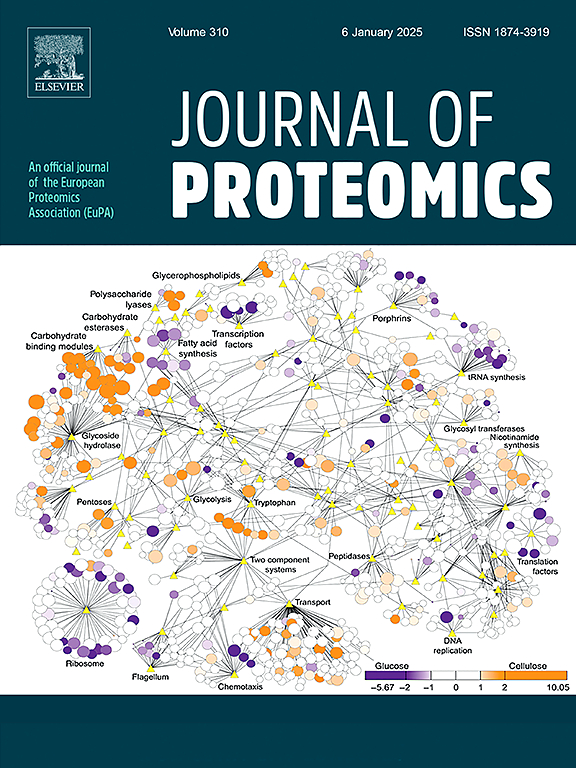Advancing tissue analysis: Integrating mass tags with mass spectrometry imaging and immunohistochemistry
IF 2.8
2区 生物学
Q2 BIOCHEMICAL RESEARCH METHODS
引用次数: 0
Abstract
In biological and biomedical research, it's a crucial task to detect or quantify proteins or proteomes accurately across multiple samples. Immunohistochemistry (IHC) and spatial proteomics based on mass spectrometry imaging (MSI) are used to detect proteins in tissue samples. IHC can detect precisely but has a limited throughput, whereas MSI can simultaneously visualize thousands of specific chemical components but hindered by detailed protein annotation. Thereby, the introduction of mass tags may be adopted to expand the potential for integrating MSI and IHC. By enriching optical information for IHC and enhancing MS signals, mass tags can boost the accuracy of qualitative, localization, and quantitative detection of specific proteins in tissue sections, thereby widening the scope of protein detection and annotation results. Consequently, more comprehensive information regarding biological processes and disease states can be obtained, which aids in understanding complex biological processes and disease mechanisms and provides additional perspectives for clinical diagnosis and treatment. In the current review, we aim to discuss the role of different mass tags (e.g., mass tags based on inorganic molecules and organic molecules) in the combined application of MSI and IHC.

推进组织分析:将质量标签与质谱成像和免疫组化相结合。
在生物和生物医学研究中,准确检测或量化多个样本中的蛋白质或蛋白质组是一项至关重要的任务。免疫组织化学(IHC)和基于质谱成像(MSI)的空间蛋白质组学可用于检测组织样本中的蛋白质。IHC 可以精确检测,但检测量有限,而 MSI 可以同时显示成千上万种特定化学成分,但受制于详细的蛋白质注释。因此,可以采用质量标签来扩大 MSI 和 IHC 的整合潜力。通过丰富 IHC 的光学信息和增强 MS 信号,质量标签可提高组织切片中特定蛋白质定性、定位和定量检测的准确性,从而扩大蛋白质检测和注释结果的范围。因此,可以获得有关生物过程和疾病状态的更全面信息,有助于理解复杂的生物过程和疾病机制,为临床诊断和治疗提供更多视角。在本综述中,我们旨在讨论不同质量标记(如基于无机分子和有机分子的质量标记)在 MSI 和 IHC 联合应用中的作用。
本文章由计算机程序翻译,如有差异,请以英文原文为准。
求助全文
约1分钟内获得全文
求助全文
来源期刊

Journal of proteomics
生物-生化研究方法
CiteScore
7.10
自引率
3.00%
发文量
227
审稿时长
73 days
期刊介绍:
Journal of Proteomics is aimed at protein scientists and analytical chemists in the field of proteomics, biomarker discovery, protein analytics, plant proteomics, microbial and animal proteomics, human studies, tissue imaging by mass spectrometry, non-conventional and non-model organism proteomics, and protein bioinformatics. The journal welcomes papers in new and upcoming areas such as metabolomics, genomics, systems biology, toxicogenomics, pharmacoproteomics.
Journal of Proteomics unifies both fundamental scientists and clinicians, and includes translational research. Suggestions for reviews, webinars and thematic issues are welcome.
 求助内容:
求助内容: 应助结果提醒方式:
应助结果提醒方式:


